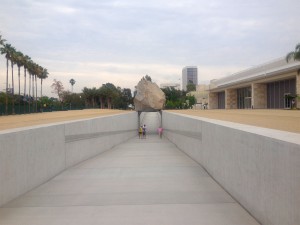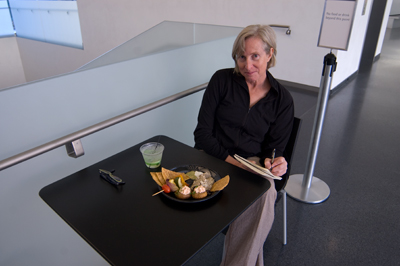Why unsafe?

November 18, 2017 – May 21, 2018
by Terry Talty
Susan Sontag was once asked what she reads on the beach. She said, no matter her mental state, being at the beach, in the library or in her office, she always reads to have her thinking disrupted. She wanted to question established thinking, or her current personal thinking, or just to learn something new from everything she read. The kind of stuff Sontag liked to read is unsafe for anyone guarding what one already thinks. If you look at unsafe art it could disrupt, could cause you to rethink things.
The blogs subject is contemporary visual art. Contemporary means of the current time, and one characteristic of art made recently is openness. It is sometimes said contemporary art needs the viewer, reader, user or hearer to be complete. Not reaction closes, but that reading or viewing is a creative act itself. My hope is my responses help to fill. And welcome others as well.Poetry is thinking about thinking, so I use this form sometimes to explain my reaction. Honestly, I hope what I write here is worthwhile even if you haven’t seen the show. I hope the images from it are interesting, too, but I know that often they are not really a great substitute for seeing the work itself.
I will often include quick videos of the show so that you can virtually walk around it, and this may be more helpful. Maybe you’ll think something new. Comments with thoughts, or even your experience of the show are welcome on each post. Sometimes I’ll add voices over the video or report what someone else said about the show. I think it can’t hurt to have more conversations about visual art, especially if they’re disruptive.
Looking at Contemporary Visual Art
by Terry Talty
 For many years, I wrote about looking at contemporary art, labeling myself an Art Tourist. The pieces I’ve written are verbal descriptions of experiences generated by looking at an exhibition or other display of stuff in the visual art context today.
For many years, I wrote about looking at contemporary art, labeling myself an Art Tourist. The pieces I’ve written are verbal descriptions of experiences generated by looking at an exhibition or other display of stuff in the visual art context today.
If you look at contemporary art, you know you may see drawing, painting, crafts, photos, video, stuff laying around, sounds, performances or simply idea. And you might be asked to do something with some stuff, or smell, or just hear. You probably have heard the current period called Post Modernism or Pluralism, and heard it described as “anything goes” and you might think it’s more trouble to understand than it’s worth.
But, you may have had experience the Art Tourist describes. Sometimes you leave a museum or gallery and you can’t stop talking about the stuff seen, or you need to come back again. Sometimes you feel confused and want someone to just give it up and explain what’s going on, or you leave thinking precious time was wasted.
Understanding the experiences and thoughts of other humans joins us as a species and makes each one of us more than just the stuff inside a fleshy shell. Art can be a conductor, a facilitator to this intra-species understanding. This blog attempts to crank up some energy about looking at art, and to reflect on how well art enterprises/institutions do the job of communicating to a regular viewer like us.
The entries are viewer-centric, a viewer who openly chooses to look, but who hasn’t necessarily seen the bio-pic of the artist or mind melded with the curator. If art is made to communicate, then a regular viewer should be able to see an exhibition or a piece of art and get something from it. If it needs explanation, if we must know the title, if we need 3-D glasses, then somehow that art enterprise/institution should reveal what is needed, before they reveal when and where we can see it.
The purpose of these entries are not to find out why someone made the art, or how difficult the show was to transport or acquire, or assemble, or how much it means to the curator or cost an institution, or if anything is selling – unless that’s part of the art – it is to understand and experience what is presented to the ordinary viewer. The aim is to expose a bit of what can be obtained from seeing the show.
Hopefully, these texts will add something of their own to our human experience, and you will talk about it for a minute, or two, later.

